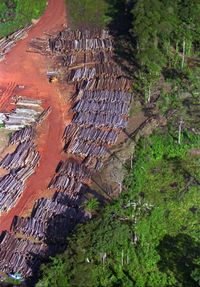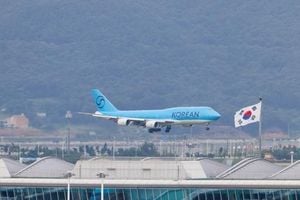On September 27, 2025, the rolling lawns of Central Park in New York City pulsed with music, activism, and a sense of global urgency as the thirteenth annual Global Citizen Festival unfolded. Drawing 60,000 attendees and millions more online, the event was more than a star-studded concert—it was a rallying cry for the planet, a convergence of world leaders, artists, and everyday citizens determined to tackle some of humanity’s most pressing challenges.
This year’s festival, aligned with the United Nations General Assembly and Climate Week NYC, marked a pivotal moment in the global movement for climate action, poverty reduction, and education. According to Global Citizen, the three core campaigns driving the festival were: expanding renewable energy access in Africa, protecting and restoring the Amazon rainforest, and improving education and football opportunities for children worldwide.
As the world watched, the Protect the Amazon (PTA) campaign announced it had raised $280 million to date, safeguarding 25 million hectares of the Amazon rainforest. The campaign’s goal is even more ambitious: mobilizing $1 billion to protect and restore the Amazon, a region losing ten soccer fields’ worth of forest every minute. The festival’s energy was palpable as leaders and advocates pressed for urgent action ahead of COP30, the major U.N. climate summit scheduled for November in Belém, Brazil, at the heart of the Amazon.
Meanwhile, Suriname’s government made headlines with a pledge to permanently protect 90% of its tropical forests, a move described by conservationists as “unprecedented for the Amazon region,” as reported by the Associated Press. President Jennifer Geerlings-Simons, who took office two months prior, delivered the commitment during Climate Week in New York City. Suriname, already home to the world’s highest share of forest cover—approximately 93% of its land—acts as a crucial carbon sink, absorbing more carbon dioxide than it emits. “We have 90% forest coverage—we want to keep it that way. Citizens have always got to take action. Politicians and businesses alone will not do the job,” Geerlings-Simons declared.
Backing this bold promise, a coalition of environmental donors—including Rainforest Trust, Re:wild, Andes Amazon Fund, the Liz Claiborne Foundation, and Art Into Acres—committed $20 million to help finance the protection effort and support local jobs. Suriname’s forests, home to jaguars, giant river otters, tapirs, and over 700 bird species, are vital not only for local communities but also for stabilizing the global climate. The country plans to update its conservation laws by the end of 2025, aiming to strengthen protections and recognize the ancestral lands of Indigenous and Maroon peoples. Yet, as Hugo Jabini, a lawyer from Suriname’s Saamaka Maroon community, warned, “Suriname is the only country in the Western Hemisphere where Indigenous and tribal land rights are not legally recognized. Without recognition, the very people who depend on the forest—and who are best placed to protect it—cannot truly safeguard it.”
Beyond Suriname, the Amazon’s fate was a central theme at the festival and in parallel campaigns. The PTA campaign’s $280 million milestone was just one of many commitments announced. The Inter-American Development Bank pledged $100 million through its Amazonia Forever Program, supporting conservation and sustainable development across the region. Everland secured $135 million to finance Indigenous-led forest conservation, and the Jaguar Rivers Initiative, launched by Rewilding Argentina and Onçafari, received $26 million to protect and restore ecosystems across the Paraná River Basin and Pantanal.
But the Amazon is not the only rainforest facing existential threats. In Mexico’s southeastern state of Chiapas, the Lacandón Jungle stands as a vibrant, if lesser-known, counterpart to the Amazon. As reported by Mexico News Daily, the Lacandón contains 25% of Mexico’s living species, including tapirs, spider monkeys, endangered jaguars, and a third of the country’s bird species. While the Amazon’s vastness is legendary, the Lacandón offers a similarly wild experience—thick with tropical heat and the scent of damp earth, alive with the calls of howler monkeys and the buzz of insects. It boasts natural swimming holes, misty cascades, and ancient Maya sites like Yaxchilán and Bonampak, the latter renowned for its vivid murals.
Unlike the Amazon, the Lacandón is relatively accessible, reachable via flights to Tuxtla Gutiérrez or Villahermosa and then by bus or colectivo. Tour operators such as LacanTours, Campamento Lacadones, and Top Che Ecolodge work closely with local Lacandón Maya communities, who have protected this ecosystem for centuries. Yet, the jungle is under siege: only about 10% of its original untouched forest remains, with local groups in Lacanjá Chansayab fighting deforestation. Responsible tourism, the article notes, is one way visitors can help support conservation and the communities that steward the land.
Back in New York, the Global Citizen Festival spotlighted another urgent front: renewable energy in Africa. Commitments from the European Commission, Pele Energy Group, Globaleq, and Energea will power 4.6 million homes across Africa by 2030, far exceeding the festival’s initial target. These pledges are part of the Scaling Up Renewables in Africa campaign, which aims to mobilize $1.5 billion and train 50,000 young workers for green jobs. “Power generation is like building the foundation of the house,” said Jonathan Hoffman, CEO of Globaleq. “You can build on more when you have more power generation. So we think what we are able to do at Globaleq in delivering this power generation in Africa will help build the economy.”
The festival’s reach extended to education and nutrition as well. Over $140 million was mobilized for children’s education and nutrition, including more than $30 million for the FIFA Global Citizen Education Fund. The fund’s goal: raise $100 million by the 2026 FIFA World Cup to provide quality education and football access for 30,000 children worldwide. Contributions poured in from MetLife Foundation, Bank of America, Cisco, and the Republic of Sierra Leone, among others. France’s Agence Française de Développement Group also pledged to support the initiative. “Every child deserves the chance to grow, to dream, and to reach their full potential. When we invest in child nutrition, we invest in a more prosperous world for us all,” said Canada’s Minister of International Development Randeep Sarai, following Canada’s C$78 million pledge to UNICEF’s Child Nutrition Fund.
The festival’s impact wasn’t limited to the global stage. In New York City, hundreds of volunteers joined environmental clean-ups and community support efforts, earning tickets to the event by taking action. Sustainability was a guiding principle: the festival’s carbon footprint was offset through surplus carbon credits, and all food was vegetarian, served in compostable packaging.
As the music faded and the crowds dispersed, the message lingered: collective action—whether in the Amazon, Africa, or New York—can drive real change. The road ahead is long, with COP30 and the G20 Summit in Johannesburg looming, but the commitments made at the Global Citizen Festival 2025 offer a glimpse of hope. As President Geerlings-Simons of Suriname put it, keeping the world’s forests standing requires everyone—citizens, politicians, and businesses alike—to step up. The stakes, after all, could not be higher.




